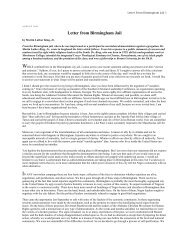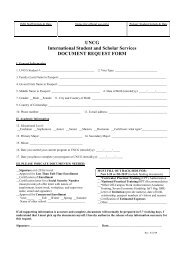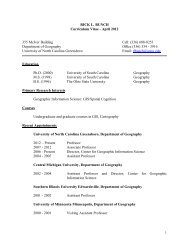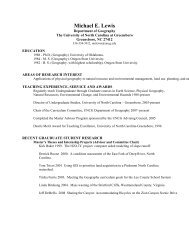Safety and Health Policy and Procedure Manual TRENCHING AND ...
Safety and Health Policy and Procedure Manual TRENCHING AND ...
Safety and Health Policy and Procedure Manual TRENCHING AND ...
You also want an ePaper? Increase the reach of your titles
YUMPU automatically turns print PDFs into web optimized ePapers that Google loves.
Visual <strong>and</strong> <strong>Manual</strong> analyses: The visual <strong>and</strong> manual analyses, such as those noted as being<br />
acceptable in paragraph (d) of Appendix A, shall be designed <strong>and</strong> conducted to provide sufficient<br />
quantitative <strong>and</strong> qualitative information <strong>and</strong> may be necessary to identify properly the properties,<br />
factors, <strong>and</strong> conditions affecting the classification of the deposits.<br />
LAYERED SYSTEMS<br />
Layered systems: In a layered system, the system shall be classified in accordance with its<br />
weakest layer. However, each layer may be classified individually where a more stable layer lies<br />
under a less stable layer.<br />
RECLASSIFICATION<br />
Reclassification: If after classifying a deposit, the properties, factors, or conditions affecting its<br />
classification change in any way, the changes shall be evaluated by a competent person. The<br />
deposit shall be reclassified as nescessary to reflect the changed circumstances.<br />
ACCEPTABLE VISUAL <strong>AND</strong> MANUAL TESTS<br />
VISUAL TESTS<br />
(1) Visual tests: Visual analysis is conducted to determine qualitative information<br />
regarding the excavation site in general, the soil adjacent to the excavation, the soil<br />
forming the sides of the open excavation, <strong>and</strong> the soil taken as samples from<br />
excavated material.<br />
TEST<br />
RESULTS<br />
(i) Observe samples of soil that are excavated <strong>and</strong> soil in the sides of the excavation.<br />
Estimate the range of particle sizes <strong>and</strong> the relative amounts of the particle sizes. Soil<br />
that is primarily composed of fine-grained material is cohesive material. Soil<br />
composed primarily of coarse-grained s<strong>and</strong> or gravel is granular material.<br />
(ii) Observe soil as it is excavated. Soil that remains in clumps when<br />
excavated, is cohesive. Soil that breaks up easily <strong>and</strong> does not stay in<br />
clumps is granular.<br />
(iii) Observe the side of the opened excavation <strong>and</strong> the surface area subject<br />
area adjacent to the excavation. Crack-like openings, such as tension<br />
cracks, could indicate fissured material. If chunks of soil spall off a vertical<br />
side, the soil could be fissured. Small spalls are evidence of moving ground<br />
<strong>and</strong> are indications of potentially hazardous situations.<br />
(iv) Observe the area adjacent to the excavation <strong>and</strong> the excavation itself for<br />
evidence of existing utility <strong>and</strong> other underground structures, <strong>and</strong> to identify<br />
previously disturbed soil.<br />
(v) Observe the opened side of the excavation to identify layered systems.<br />
Examine layered systems to identify if the layers slope toward the<br />
excavation. Estimate the degree of slope of the layers.<br />
(vi) Observe the area adjacent to the excavation <strong>and</strong> the sides of the opened<br />
excavation for evidence of surface water, water seeping from the sides of the
















